
Journal of Superhard Materials
metrics 2024
Fostering collaboration in the evolving world of superhard materials.
Introduction
The Journal of Superhard Materials, published by PLEIADES PUBLISHING INC, is a premier journal dedicated to advancing the field of superhard materials, including their synthesis, properties, and applications. With an ISSN of 1063-4576 and E-ISSN 1934-9408, this journal serves as an essential resource for researchers and professionals focused on material science and inorganic chemistry. As of 2023, it ranks in the Q3 category for both Inorganic Chemistry and Materials Science (miscellaneous), establishing its growing significance within the scientific community. The journal, located in the United States at PLEIADES HOUSE, New York, welcomes submissions that contribute innovative findings in the realm of superhard materials, fostering collaboration and knowledge exchange among scholars. Researchers interested in cutting-edge developments and applications in this niche area will find valuable insights and findings published in this journal, encouraging continued exploration and discovery in the materials sciences.
Metrics 2024
 0.34
0.34 1.20
1.20 1.00
1.00 27
27Metrics History
Rank 2024
Scopus
IF (Web Of Science)
JCI (Web Of Science)
Quartile History
Similar Journals

POLYMERS & POLYMER COMPOSITES
Advancing Knowledge in Polymers and CompositesPOLYMERS & POLYMER COMPOSITES, published by SAGE Publications Ltd, is a prestigious journal dedicated to the exploration of significant advancements in the diverse fields of polymers, composite materials, and their innovative applications. With an ISSN of 0967-3911 and E-ISSN of 1478-2391, this journal plays a crucial role in the academic community, boasting an impressive ranking in the Q2 quartile across pivotal categories such as Ceramics and Composites, Materials Chemistry, and Polymers and Plastics in 2023. Positioned in the United Kingdom, it serves as a vital resource for researchers and professionals, providing insights into current trends and future directions in material science. Despite its availability not extending to Open Access, the journal aims to promote rigorous peer-reviewed research, thus fostering knowledge and collaboration among scholars. With publication convergence from 1993 to 2024, POLYMERS & POLYMER COMPOSITES stands as a cornerstone for those pursuing advanced understanding and excellence in material innovation.
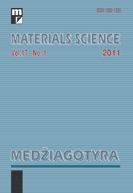
Materials Science-Medziagotyra
Innovating Tomorrow's Materials TodayMaterials Science-Medziagotyra is a prominent peer-reviewed journal dedicated to the field of materials science, published by Kaunas University of Technology in Lithuania. Since its transition to an Open Access model in 2012, it has facilitated broad dissemination of research findings, enhancing accessibility for researchers and professionals worldwide. This journal is indexed in Scopus and has consistently contributed to the academic community with a focus on innovative materials and their applications, ranking in the Q3 category of Materials Science (miscellaneous) as of 2023. With the responsibility of synthesizing substantial research from 2008 through 2024, Materials Science-Medziagotyra aims to bridge gaps in material research while fostering collaboration among scientists, students, and industry leaders. Its commitment to quality and rigor in scientific discourse underscores its relevance and importance in advancing the field.
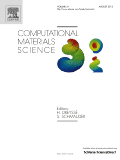
COMPUTATIONAL MATERIALS SCIENCE
Exploring the Fusion of Computation and MaterialsCOMPUTATIONAL MATERIALS SCIENCE is a prestigious academic journal dedicated to the dissemination of innovative research in the field of computational materials science, emphasizing the interplay between computational methodologies and materials engineering. Published by ELSEVIER in the Netherlands, this journal showcases high-impact articles that contribute significantly to the understanding of material properties through computational techniques. As evidenced by its 2023 Scopus Rankings, which place it in the top quartiles across multiple disciplines including Computer Science, Materials Science, and Physics and Astronomy, it is a vital resource for researchers, professionals, and students alike. With a focus on advancing scientific knowledge and practical applications, COMPUTATIONAL MATERIALS SCIENCE aims to bridge the gap between theoretical investigations and experimental validation. Explore a wealth of cutting-edge research designed to inspire the next generation of innovations in materials science through this esteemed publication.
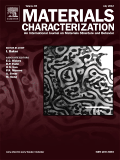
MATERIALS CHARACTERIZATION
Transforming Knowledge into Practical ApplicationsMATERIALS CHARACTERIZATION is a leading international journal dedicated to the advancement of knowledge in the field of materials science and engineering. Published by Elsevier Science Inc, this esteemed journal has been disseminating vital research since 1970 and continues to be essential for scholars and industry professionals alike. With an impressive impact reflected in its Q1 quartile rankings across several categories—including Condensed Matter Physics, Materials Science, Mechanical Engineering, and Mechanics of Materials—MATERIALS CHARACTERIZATION stands out as a premier outlet for innovative studies and technical advancements. Researchers can access a wealth of peer-reviewed articles that explore properties, characterization techniques, and applications of materials, fostering interdisciplinary collaboration. With a commitment to high-quality research and comprehensive review processes, the journal plays a crucial role in shaping the future of materials science, making it an invaluable resource for anyone invested in this dynamic field.

JOURNAL OF WUHAN UNIVERSITY OF TECHNOLOGY-MATERIALS SCIENCE EDITION
Exploring the Future of Material CompositionJOURNAL OF WUHAN UNIVERSITY OF TECHNOLOGY-MATERIALS SCIENCE EDITION, published by Wuhan University of Technology, stands as a prominent platform for the dissemination of innovative research in the field of Materials Science. With an ISSN of 1000-2413 and an E-ISSN of 1993-0437, this journal is committed to advancing the understanding of material composition, properties, and applications, contributing to the broader scientific community. Since its inception in 1994, the journal has maintained a steady trajectory of growth, culminating in a Q3 category ranking in Materials Science (miscellaneous) for the year 2023, positioning it within the 33rd percentile of its peers in Scopus rankings. By embracing rigorous peer-review standards and encouraging collaborative scholarship, the journal aims to inspire researchers, professionals, and students alike to explore cutting-edge advancements within the field. Although it does not currently operate under an open access model, its wealth of knowledge remains invaluable for those seeking to deepen their understanding of materials science and its transformative impact across various industries.
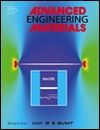
ADVANCED ENGINEERING MATERIALS
Exploring the Frontiers of Material InnovationADVANCED ENGINEERING MATERIALS is a leading journal dedicated to the field of materials science, particularly within the realm of condensed matter physics. Published by WILEY-V C H VERLAG GMBH in Germany, this esteemed journal has been a crucial platform for disseminating cutting-edge research since its inception in 1999. With an impressive impact factor and ranked in the top quartiles of its categories, it boasts a Q1 ranking in Condensed Matter Physics and a Q2 rank in related materials science fields as of 2023. ADVANCED ENGINEERING MATERIALS serves a diverse readership, including researchers, industry professionals, and students, striving to advance the understanding and application of innovative materials. Frequent contributions to this journal help bridge theoretical advancements with practical applications, fostering a vibrant academic and industrial dialogue. Although currently not an open-access journal, the insights shared within its pages are pivotal for anyone engaged in the dynamic sectors of engineering and material sciences.

PHYSICS AND CHEMISTRY OF MINERALS
Fostering Collaboration in Mineral Research ExcellencePHYSICS AND CHEMISTRY OF MINERALS, published by SPRINGER, is a premier journal dedicated to advancing the understanding of the physical and chemical properties of minerals, their interactions, and their significance in various geological processes. With an ISSN of 0342-1791 and an E-ISSN of 1432-2021, this journal serves as a vital resource for researchers and professionals in geochemistry and petrology, as well as materials science. Reflecting the journal's commitment to quality scholarship, it has achieved Q3 rankings in both Geochemistry and Petrology, and Materials Science (miscellaneous) categories. Established in 1977 and continuing through 2024, the journal has consistently provided a platform for high-impact research, fostering collaboration and innovation in the field. Located in Germany and reaching a global audience, PHYSICS AND CHEMISTRY OF MINERALS is instrumental for students, academics, and industry experts looking to stay at the forefront of mineral research and applications.

Ceramics-Switzerland
Unlocking New Horizons in Ceramics TechnologyCeramics-Switzerland is a prominent open-access journal published by MDPI, dedicated to advancing knowledge in the field of ceramics and materials science. Established in 2018, this journal serves as a vital platform for researchers, professionals, and students to disseminate innovative research and technology in ceramics and composites. With an impressive impact factor and a categorized ranking of Q2 in Ceramics and Composites and Q3 in Miscellaneous Materials Science for 2023, Ceramics-Switzerland signifies its growing influence and contribution to the scientific community. The journal is indexed in Scopus, where it boasts a rank that highlights its competitive standing within the field. Being an open access journal enables the wide distribution of research findings, fostering greater collaboration and knowledge sharing among scholars and industry experts globally.

POWDER METALLURGY AND METAL CERAMICS
Shaping Tomorrow's Technologies through Metallurgy and CeramicsPOWDER METALLURGY AND METAL CERAMICS is a prestigious journal published by Springer, dedicated to advancing the field of powder metallurgy and the development of metal ceramics. With an ISSN of 1068-1302 and an E-ISSN of 1573-9066, this journal includes significant research contributions that explore innovative developments in materials science and engineering. Since its inception in 1993, it has garnered attention within multiple disciplines, consistently ranking in the Q2 and Q3 quartiles across categories such as Metals and Alloys, Ceramics and Composites, and Mechanics of Materials. The journal offers valuable insights into the synthesis, characterization, and applications of advanced materials, making it an essential platform for researchers, professionals, and students aiming to stay at the forefront of technological advancements in this dynamic field. Although not currently offering open access, the journal remains a critical resource for disseminating high-quality research that influences both academia and industry.
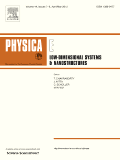
PHYSICA E-LOW-DIMENSIONAL SYSTEMS & NANOSTRUCTURES
Fostering collaboration in the world of low-dimensional physics.PHYSICA E-LOW-DIMENSIONAL SYSTEMS & NANOSTRUCTURES, published by ELSEVIER, is a premier journal dedicated to advancing the field of condensed matter and nanoscience, focusing on the innovative properties and applications of low-dimensional systems. With an esteemed Q2 ranking in multiple categories including Atomic and Molecular Physics, Condensed Matter Physics, and Nanoscience for 2023, this journal serves as a vital platform for researchers and professionals aiming to disseminate and discuss cutting-edge research. Established in 1974 and converging its focus from 1997 onwards, PHYSICA E captures the evolving landscape of material science, making it a crucial resource for anyone invested in the dynamics of electronic, optical, and magnetic materials. Although the journal operates on a subscription basis, its broad accessibility and significant placement within Scopus rankings—such as being in the 83rd percentile for Condensed Matter Physics—underscore its importance within the academic community. Researchers and students alike will find this journal a cornerstone for fostering knowledge and collaboration in the fields of nanotechnology and low-dimensional physics.